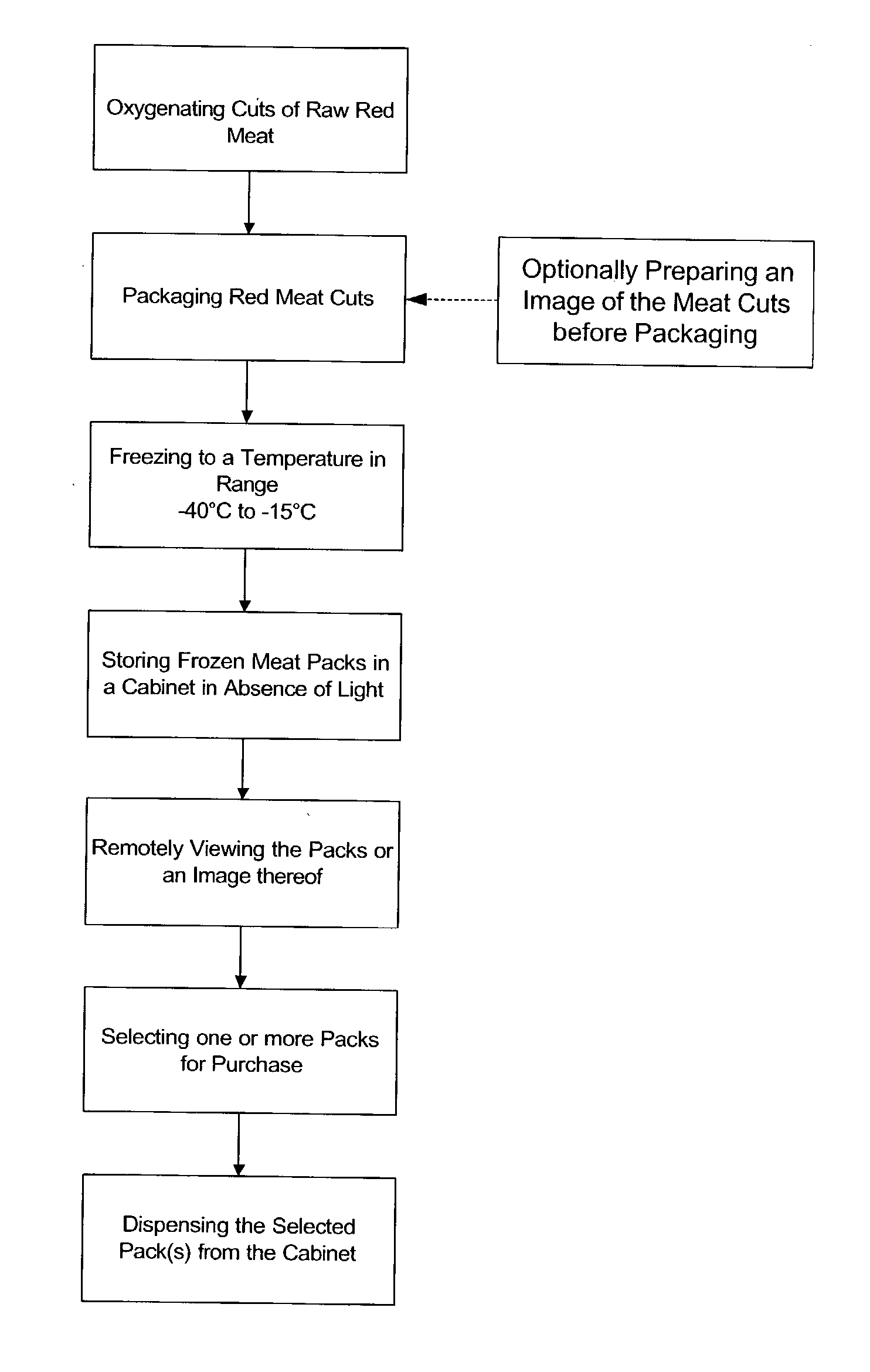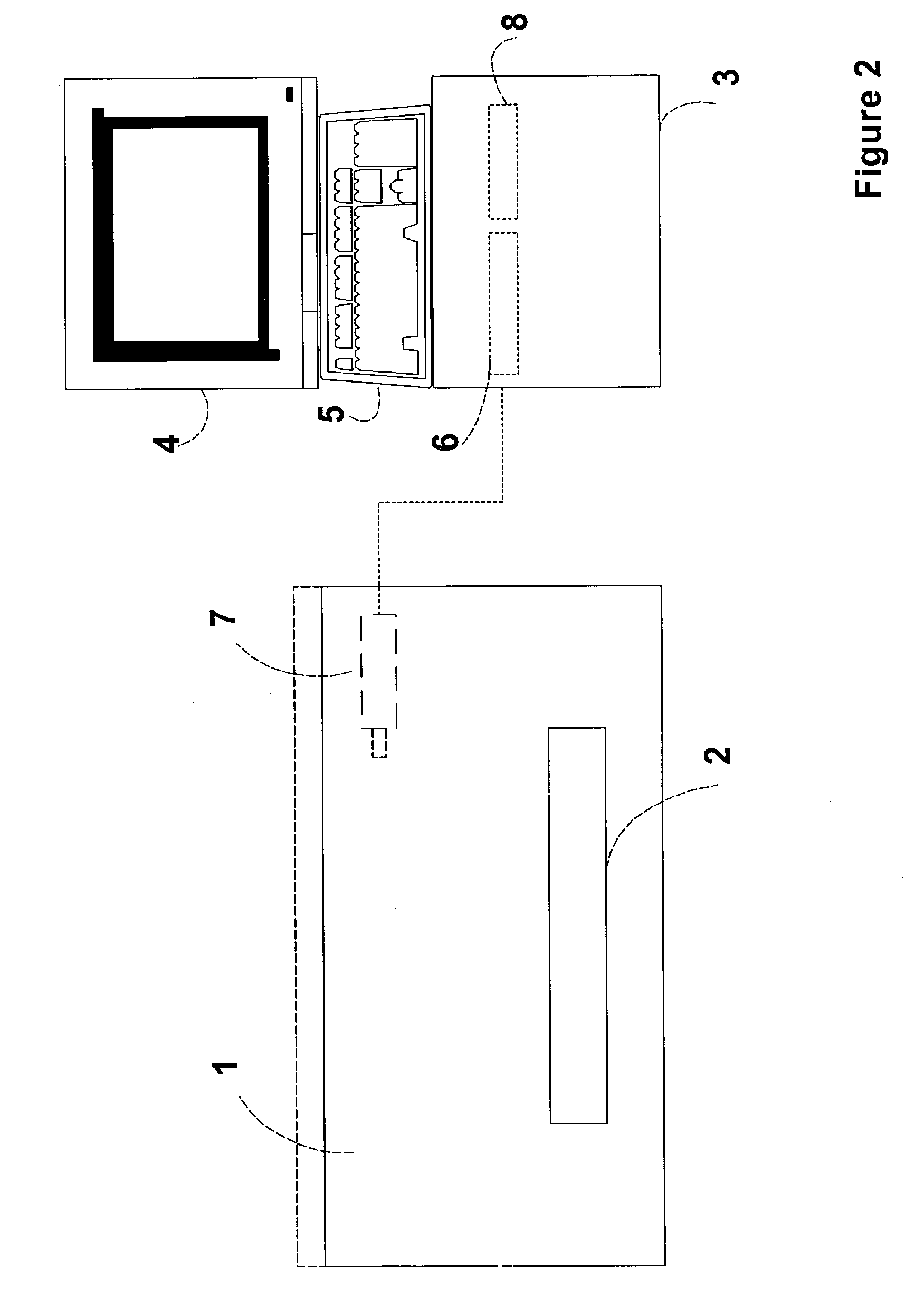Method and system of storing and displaying meat
a technology applied in the field of storing and displaying meat, can solve the problems of not being able to meet the needs of consumers, not being able to achieve the effects of improving safety and traceability, attractive appearance, and improving eating quality
- Summary
- Abstract
- Description
- Claims
- Application Information
AI Technical Summary
Benefits of technology
Problems solved by technology
Method used
Image
Examples
Embodiment Construction
[0096] Production
[0097] Only prime beef from young, two-tooth animals reared in an approved system, guaranteed free from anabolic steroids, beta-agonist or any other growth promoting agent is used. Only the carcasses of cattle, raised in a specially controlled environmentally friendly production system are accepted. Meat from approved systems is guaranteed safe to eat. The system is similarly selective in choosing suitable animals from other species. Animals are continuously inspected by veterinary staff to ensure the highest health and safety standards when they are slaughtered. The production system includes transportation from the farm and conditions of lairage prior to slaughter, all of which will be strictly monitored and controlled.
[0098] Slaughter & Dressing
[0099] Animals are slaughtered on arrival at the abattoir or after an approved period of lairage and feeding. Carcasses are electrically stimulated to prevent cold shortening during subsequent chilling. Hind-quarters from ...
PUM
 Login to View More
Login to View More Abstract
Description
Claims
Application Information
 Login to View More
Login to View More - R&D
- Intellectual Property
- Life Sciences
- Materials
- Tech Scout
- Unparalleled Data Quality
- Higher Quality Content
- 60% Fewer Hallucinations
Browse by: Latest US Patents, China's latest patents, Technical Efficacy Thesaurus, Application Domain, Technology Topic, Popular Technical Reports.
© 2025 PatSnap. All rights reserved.Legal|Privacy policy|Modern Slavery Act Transparency Statement|Sitemap|About US| Contact US: help@patsnap.com



